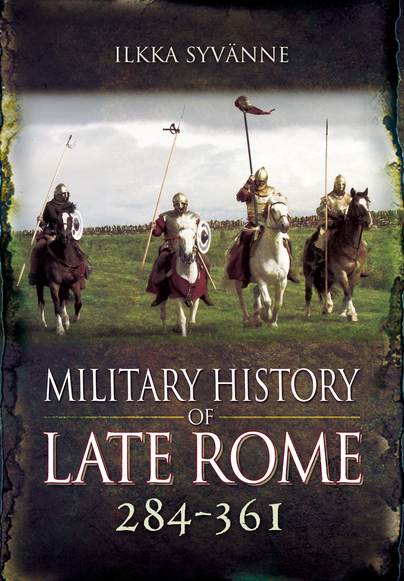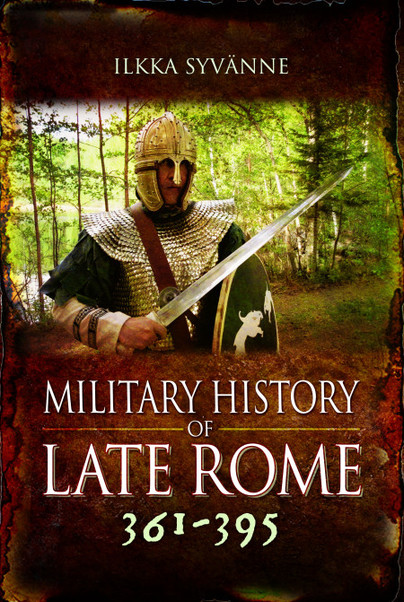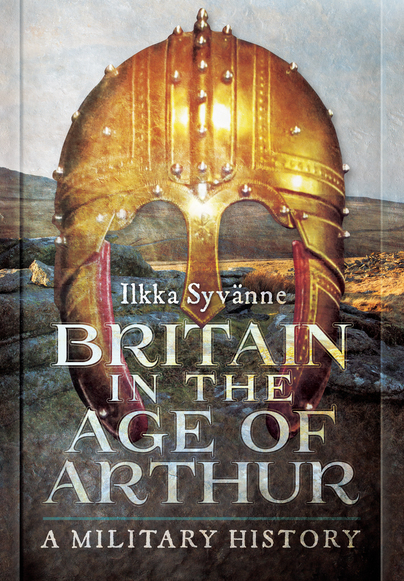Interview with Ilkka Syvänne
This time around I interview Ilkka Syvänne. Ilkka writes a lot around the Late Rome period and uses re-enactors in his books, which is a great thing. I have Ilkka’s first 2 Military History of Late Rome books and they are very well written and hugely detailed.
Tell us a little about yourself.
I am a military historian from Finland who gained the doctorate (PhD) from the University of Tampere in 2004. The topic of the doctoral dissertation was the late Roman art of war with the title The Age of Hippotoxotai. Art of War in Roman Military Revival and Disaster (491-636). I was the Vice Chairman of the Finnish Society for Byzantine Studies from 2007 until 2016 when I was appointed as an Affiliated Professor of the University of Haifa.
What made you focus on the period of history you have written about?
Ever since childhood (ca. 8-12 years of age) I have been interested in all things related to military history but so that my principal field of interest is the period from ca. 400 BC until about AD 1400. I chose the late Roman period as the topic of my doctoral dissertation because I noted that the analysis of the period warfare was in dire need of complete reassessment which would take into account the information provided by the military treatises. The book series The Military History of Late Rome 7 vols. reassesses the actual military reality of this era. The other books (e.g. biographies of Caracalla, Gallienus, Aurelian, Probus, Gordian III, Philip the Arab, King Arthur and others) which I have written are based on similar observations, namely on the fact that each of the topics have required complete reassessment of the evidence.
Where do you do most of your writing?
Nowadays I do most of my writing at home.
Share one strange fact you found while researching your work?
There are actually too many to remember because I usually get several eureka moments per book. However, there is one really strange coincidence that stuck to my mind. It happened on 26 May 2014 when I was writing the Military History of Late Rome volumes 4-5 almost a year after the death of my mother. It was on that very same precise date on 26 May 2005 that my parents were visiting Agrigento (I had given them a trip to Sicily as a present) and they brought with them books and maps about Agrigento that I was using on 26 May 2014. As if that would not be enough, there was a documentary on TV today on 20 April 2020 about Agrigento when I wrote this. Really strange coincidences! If I were not a modern day rationalist, but an ancient classical author I would try to find something supernatural in those.
What is your favourite resource for carrying out research?
As a classicist, medievalist and military historian my favourite resources are naturally the original sources and in particular the military manuals and where possible also the martial arts manuals. The last mentioned is very close to my heart because I am a former martial artist myself. The injuries and age have put a limit to what I can practice these days (no longer any acrobatic stuff), but I am delighted that my son seems to share my interested in this field so that we fence every week. I possess most of the original sources as books or photocopies, but thanks to the advance of modern technology most of these are also available online.
What are you working on next?
My next project is to complete the Military History of Late Rome Volume 7 (565-641) followed up by the writing of the Late Roman Combat Tactics. The former completes my narrative series of late Roman military history while the latter provides an opportunity to present a fuller analysis of the actual combat tactics/mechanics, battle formations, equipment, weaponry and use of weapons and martial arts than is possible in a narrative history. After this, follows up the completion of a biography of the East Roman emperor Nikephoros II Phokas with the title Nikephoros II Phokas. The White Death of the Saracens. Barring any problems arising from the corona-situation etc. all of these projects will be completed before the end of the year. The first topic that I will be working on 2021 deals with a Greek military leader, the name of which will be published later. In addition to this, I am working on some articles dealing with military history.
Where can people find about more about your work? Are you active on social media, publish your own website for example?
I am active on social media – especially on my Facebook page – whenever there is a break from writing and other work. In addition to this, I try to post information and articles on my academia.edu page as often as I can. I also use LinkedIn, but less frequently than those two sites – a thing that I definitely need to correct.
Books
Military History of Late Rome 284-361
This ambitious series gives the reader a comprehensive narrative of late Roman military history from 284-641. Each volume (5 are planned) gives a detailed account of the changes in organization, equipment, strategy and tactics among both the Roman forces and her enemies in the relevant period, while also giving a detailed but accessible account of the campaigns and battles.
Volume I covers the period 284-361, starting with recovery from the ‘third-century crisis’ and the formation of the Tetrarchy. Constantine’s civil wars and stabilization are also major themes, with the pattern repeated under his sons. Constantius II’s wars against the usurper Magnentius, the Danubian tribes and the Sassanid Persians illustrate the serious combination of internal and external threats the Empire faced at this time. The author discusses these and the many other dramatic military events in their full context and puts forward some interesting conclusions on strategic and tactical developments. He argues, for example, that the Roman shift from infantry to cavalry as the dominant arm occurred considerably earlier than usually accepted. Anyone with an interest in the military history of this period will find it both informative and thought-provoking.
The Military History of Late Rome 361-395
This is the second volume in an ambitious series giving the reader a comprehensive narrative of late Roman military history from AD 284-641. Each volume (5 are planned) gives a detailed account of the changes in organization, equipment, strategy and tactics among both the Roman forces and her enemies in the relevant period, while also giving a detailed but accessible account of the campaigns and battles.
This volume covers the tumultuous period from the death of Constantius II in AD 361 to the death of Theodosius. Among the many campaigns covered, it therefore includes the Emperor Julian’s fatal campaign against the Sassanian Persians and the disastrous defeat and death of Valens at Adrianople in 378. Such calamities illustrate the level of external threat Rome’s armies faced on many fronts in this difficult period.
Britain in the Age of Arthur
King Arthur is one of the most controversial topics of early British history. Are the legends based on a real historical figure or pure mythological invention? Ilkka Syvanne’s study breaks new ground, adopting a novel approach to the sources by starting with the assumption that Arthur existed and that Geoffrey of Monmouths account has preserved details of his career that are based on real events.
He then interprets these by using common sense and the perspective of a specialist in late Roman military history to form a probable picture of what really happened during the period (roughly AD 400-550). This approach allows the author to test the entire literary evidence for the existence of Arthur to see if the supposed events of his career match what is known of the events of the period, the conclusion being that in general they do. Arthurs military career is set in the context of the wider military history of Britain and Europe in this period and along the way describes the nature of armies and warfare of the period.
< BACK

